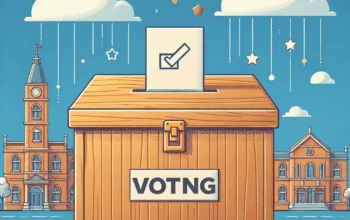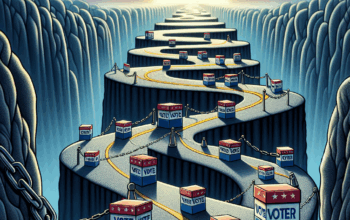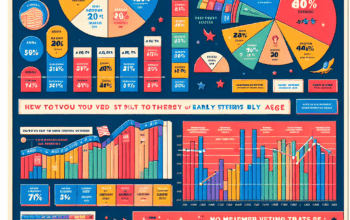As we step into the political landscape of 2025, the concept of swing states remains at the forefront of electoral discussions. These pivotal regions hold immense potential to sway Republican or Democratic victories, making them a focus for candidates and party strategists alike. Understanding the latest polling trends in swing states not only informs voters but also sets the tone for campaign strategies leading up to elections. This article delves into recent polling data, demographic shifts, key issues influencing voters, and what to expect as the political climate evolves through 2025.
Understanding Swing States: The Crux of Political Strategies
Swing states, often referred to as battleground states, are crucial territories in the United States where both Democratic and Republican candidates have similar levels of support. This unique characteristic makes these states a focal point for campaign activities, media attention, and significant voter turnout efforts. As we delve into the latest polling trends in 2025, it’s essential to recognize which states have historically flipped between parties and how demographic changes are redefining the landscape national-wide.
In previous election cycles, particularly in 2020 and 2022, states like Wisconsin, Michigan, Pennsylvania, and Arizona were battlegrounds that determined the outcome. However, the political climate has shifted significantly since then, bringing new contenders into the fray. States such as Georgia and Nevada have emerged as vital swing areas due to changing demographics and voter registration trends, making their analysis crucial for any political strategist hoping to secure a victory.
Latest Polling Trends in Key Swing States
Polling data is a powerful tool in forecasting electoral outcomes, particularly in swing states where razor-thin margins can determine control of Congress or the presidency. In 2025, the landscape of polling indicates shifting allegiances among voters, particularly among younger populations and suburban voters who are increasingly influencing electoral outcomes. Recent polls have shown a tighter race between traditional party lines, with notable fluctuations in support across various demographics.
For instance, in North Carolina, a state once solidly Republican, recent polls suggest increasing support for Democratic candidates among urban and suburban voters. This trend is attributed to issues such as healthcare, education, and climate change taking precedence in voters’ minds. As these issues gain prominence, candidates are recalibrating their messaging to resonate with the evolving priorities of the electorate, signifying a significant pivot in the traditional swing state dynamics.
Demographic Shifts Impacting Swing State Polling
One of the most critical factors influencing swing state polling in 2025 is the demographic shifts occurring across the nation. The United States is experiencing notable changes in its population, particularly in terms of ethnicity, age, and education levels. In many swing states, particularly those in the South and Southwest, increasing diversity is reshaping the political landscape. For example, the growing Hispanic and Black populations in places like Texas and Arizona are becoming more politically active, altering historical voting patterns.
Furthermore, younger voters aged 18 to 29 are increasingly aligning themselves with progressive platforms. Candidates seeking to win swing states are focusing on issues that resonate with this demographic, such as student debt relief and sustainable practices. According to recent polling data, candidates who can effectively engage younger voters may significantly improve their chances of success in key battlegrounds. By understanding these demographic changes, political candidates are not just crafting policies but creating inclusive strategies aimed at mobilizing the growing diversity of the electorate.
Key Issues Shaping the 2025 Election Landscape
In the world of electoral politics, the salient issues often dictate voter sentiment and candidate success. For the upcoming elections in 2025, several issues stand out that are particularly resonant in swing states. Foremost among these is the economy, with inflation and job stability lingering as critical concerns for voters. Polls reflect that candidates who effectively communicate their plans for job creation, economic recovery, and inflation control are likely to gain voter confidence, especially in traditionally conservative states that have witnessed economic struggles.
Additionally, social issues regarding policing, healthcare access, and reproductive rights are shaping voter sentiments significantly. Recent polling indicates that voters in swing states are highly motivated by candidates addressing these pivotal issues transparently and empathetically. For example, candidates who articulate comprehensive plans on healthcare reform are witnessing increased support among the middle-class populations struggling with affordability, revealing a trend where personal impact drives political choices.
Furthermore, climate change has become an increasingly significant concern for voters, particularly in states like Florida and Pennsylvania. The rise in extreme weather events and visible climate-related crises has driven many to seek candidates who prioritize environmental initiatives. Polling data indicates a shift in voter preference toward candidates promoting green policies and sustainable economic growth. This underscores the critical need for candidates to articulate their stance and plans regarding environmental issues effectively.
The Role of Electoral College and Voter Turnout in Swing States
The significance of the Electoral College in shaping the political dynamics of swing states cannot be overstated. In 2025, while terms such as “blue wave” and “red wave” are being floated, the reality is more complex, with electoral strategies tailored to match the unique voting behaviors in these critical areas. Each swing state carries heavy electoral votes, meaning that candidates must devote substantial resources and time to secure victories in these pivotal regions.
Voter turnout remains another crucial factor that directly impacts polling trends in swing states. Engagement efforts, particularly among younger voters and historically underrepresented communities, are fundamental for influencing election outcomes. Campaigns in 2025 are emphasizing grassroots mobilization strategies, including early voting initiatives and absentee ballots, to maximize turnout. Polls consistently show that higher voter turnout tends to benefit Democrats, prompting Republican strategies to focus on voter suppression narratives, further complicating the political landscape.
Addressing the phenomenon of disenfranchisement, candidates are actively working to counteract barriers faced by marginalized groups, understanding that inclusive voting practices can have a significant impact on their polling results. This dedication to ensuring equitable access to the electoral process is central to the narrative developing in swing states – the idea that every vote counts and every voter matters.
Conclusion: Navigating the Swing State Landscape in 2025
As we navigate the tumultuous political climate of 2025, the importance of swing states in determining electoral outcomes remains a fundamental reality for candidates and voters alike. The latest polling trends underscore the dynamic shifts in voter demographics, the relevance of key socio-economic issues, and the political strategies employed by candidates to engage a diverse electorate. Understanding these nuances is crucial for anyone wishing to grasp the intricacies of American politics today.
Candidates must recognize that the landscape is constantly evolving, requiring them to be attuned to the needs and concerns of their constituents. With pivotal issues such as the economy, social justice, and climate policy taking center stage in voter considerations, there is an opportunity for transformative change across these swing regions. As we edge closer to the elections, keeping an eye on swing state polling trends will not only be instrumental for political stakeholders but also empower voters to make informed decisions that shape the future of their communities.
FAQs
What are swing states and why are they important?
Swing states are those where both Democratic and Republican candidates have similar levels of support, making them crucial for election outcomes due to their electoral vote significance.
What recent trends are influencing swing state polling in 2025?
Recent trends include demographic shifts, heightened focus on economic stability, healthcare, social issues, and climate change, all of which are reshaping voter preferences in swing states.
How can voter turnout affect the outcome in swing states?
Higher voter turnout tends to favor Democratic candidates, particularly among younger and marginalized voters; hence, mobilization efforts are critical for impacting polling results and electoral outcomes.
What role does the Electoral College play in swing state dynamics?
The Electoral College allocates electoral votes based on state populations; swing states hold significant electoral votes, making them essential battlegrounds that can decide the outcome of presidential elections.
How are candidates adapting their strategies for the 2025 elections in swing states?
Candidates are focusing on key voter issues, tailoring their messaging to resonate with diverse demographics, and employing grassroots mobilization efforts to improve voter engagement and turnout.












